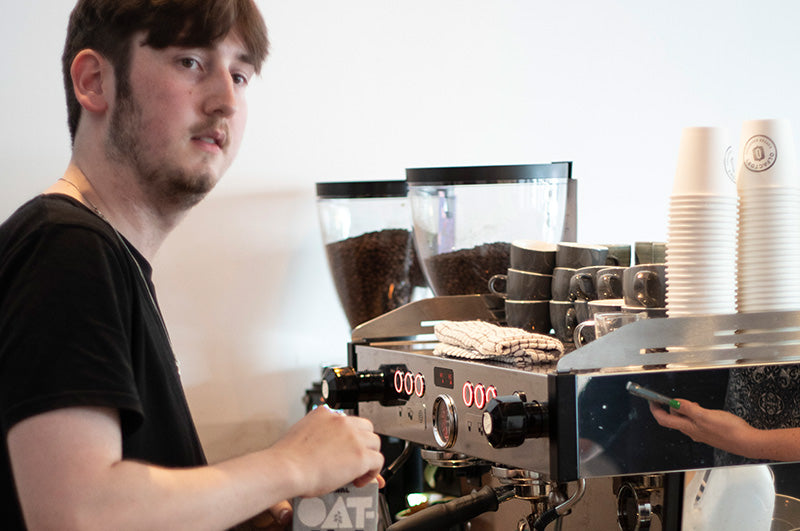Article: Mastering the Art of Dialling in Espresso at Home

Mastering the Art of Dialling in Espresso at Home
For many coffee enthusiasts, espresso is the pinnacle of the coffee experience—a rich, complex, and aromatic shot that embodies the essence of the coffee bean. However, achieving that perfect shot at home can be a challenging yet rewarding process, often referred to as "dialling in" espresso. This involves fine-tuning various elements such as grind size, dose, and extraction time to produce a balanced and flavourful shot. Continue reading as we guide you through the steps to dial in your espresso at home, helping you unlock the full potential of your beans and equipment.
The first step in dialling in espresso is ensuring we have the correct dose, which is the amount of coffee you use for each shot. Typically, a double shot of espresso uses between 18 to 20 grams of coffee, but this can vary based on personal preference and the characteristics of the beans. After measuring your dose, distribute the grounds evenly in the portafilter and apply a consistent tamping pressure to ensure even extraction. Inconsistent distribution or tamping can lead to channelling, where water flows unevenly through the coffee, resulting in a shot that’s unbalanced in flavour. A good rule of thumb is to start with a standard dose (18g) and adjust slightly up or down based on the results of your initial shots.
Next step is selecting the right grind size. Espresso requires a fine grind, but the exact level of fineness can vary depending on the beans and the machine. Start by setting your grinder to a fine setting, resembling powdered sugar. A grind that is too coarse will cause the water to flow too quickly, leading to under-extraction and a watery, sour shot. On the other hand, a grind that is too fine will result in over-extraction, creating a bitter, harsh almost savoury taste. The goal is to find the sweet spot where the water extracts the ideal balance of flavours—sweetness, acidity, and bitterness—over the course of 22 to 30 seconds of extraction time.
The extraction time, or how long it takes for the espresso to pour, is another critical factor in dialling in your shot. Ideally, a double shot should yield about 25 to 30 grams of liquid espresso in 25 to 30 seconds. If your shot is pulling too fast, you might need to grind finer or increase the dose; if it’s pulling too slowly, you might need to grind coarser or decrease the dose. Adjusting your grind size is the most effective way to control extraction time, but remember that even small changes can have a significant impact. As you experiment, pay close attention to the taste and texture of your shots—well-balanced espresso should have a harmonious blend of flavours, with a smooth mouthfeel.
Finally, don't forget to factor in your coffee beans and machine variables. Freshly roasted beans will produce better results, but they also change over time, requiring adjustments to your grind and dose as they age. Additionally, different machines can vary in pressure and temperature stability, which may affect your dialling-in process. It's essential to keep a record of your settings and results, allowing you to replicate successful shots and refine your technique over time.
Dialling in espresso at home is a process of patience, experimentation, and attention to detail. While it may take a few tries to get it just right, the payoff is well worth the effort. By understanding and adjusting the variables at play—grind size, dose, extraction time, and bean freshness—you’ll be able to consistently pull shots that highlight the unique flavours and aromas of your coffee beans. With practice and persistence, you'll not only improve your espresso-making skills but also deepen your appreciation for the art of coffee.

